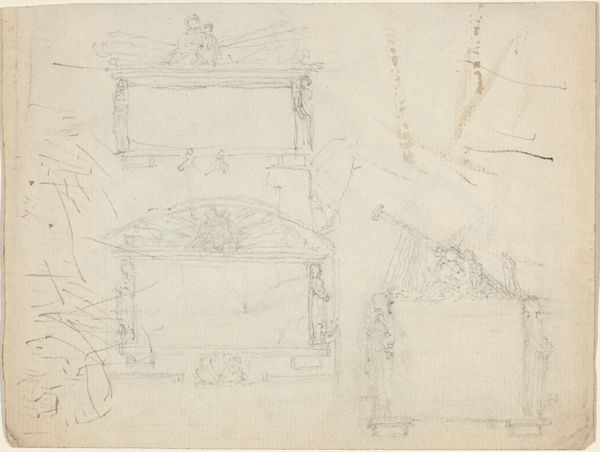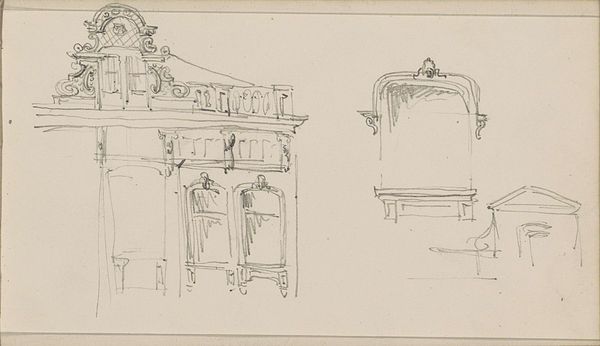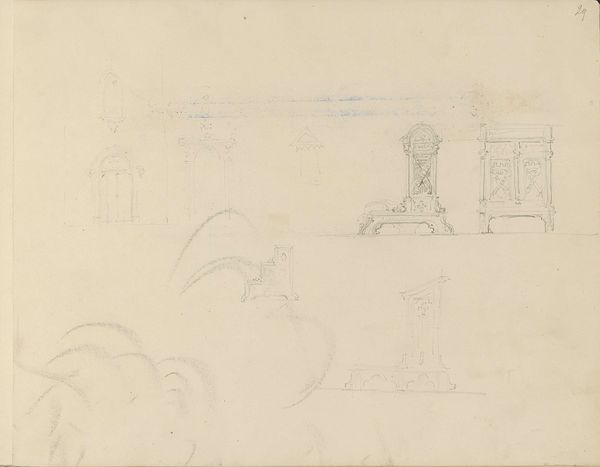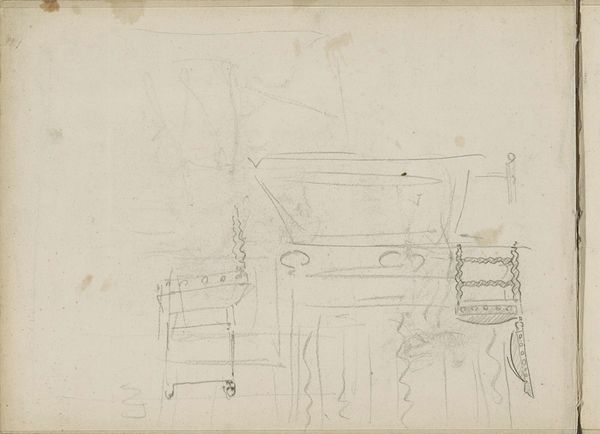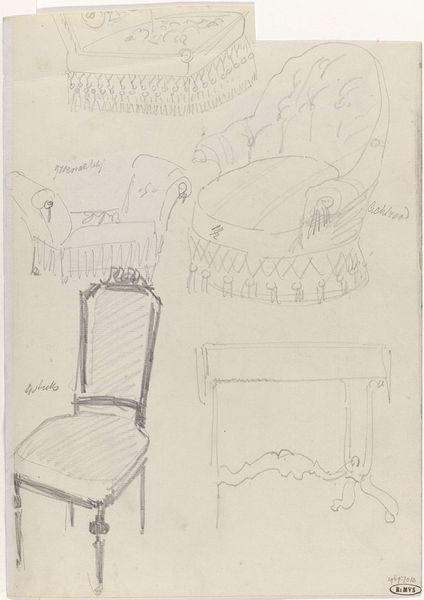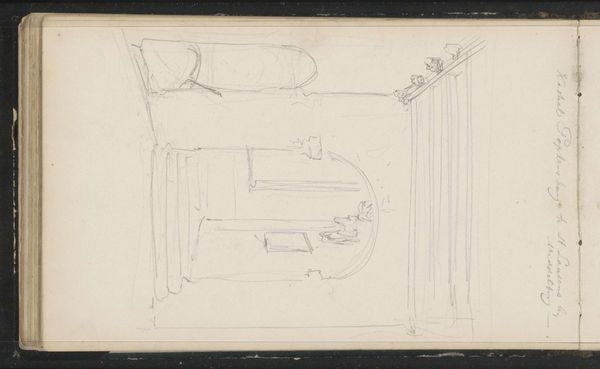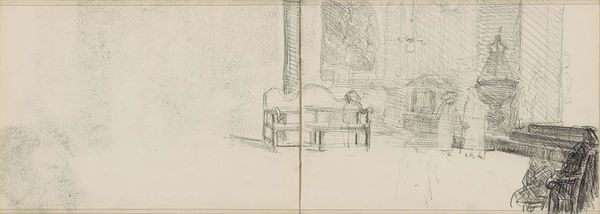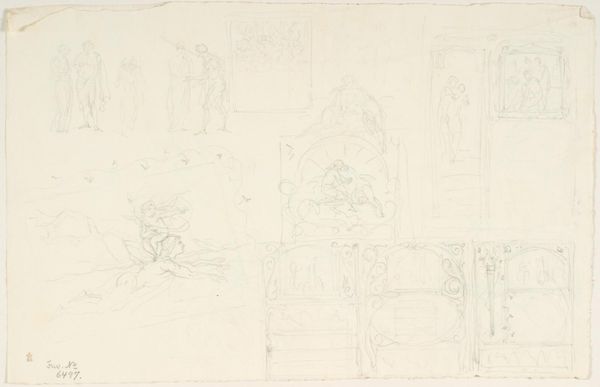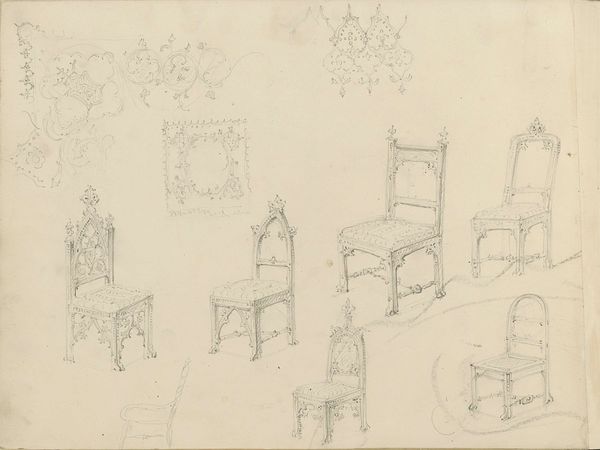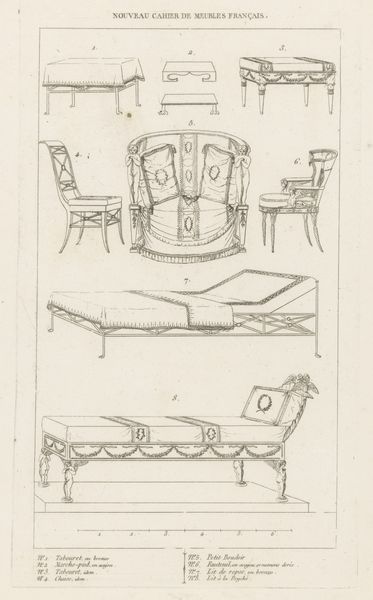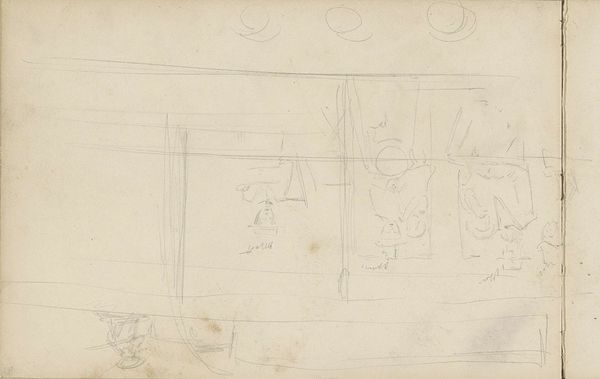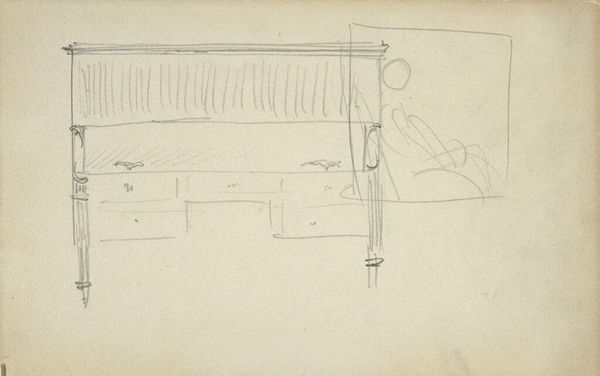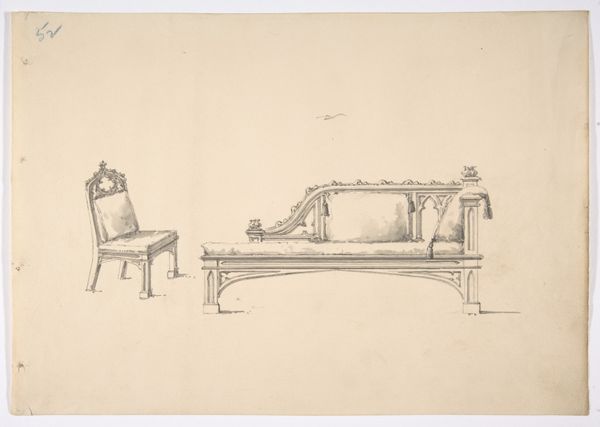
drawing, paper, pencil
#
portrait
#
drawing
#
paper
#
form
#
pencil
#
line
#
academic-art
Copyright: Rijks Museum: Open Domain
Curator: Looking at this soft pencil drawing, a preliminary study, made around 1850 by Pierre Joseph Hubert Cuypers depicting “Hemelbed, kast en voetenbank”, or four poster bed, cabinet, and footstool, held at the Rijksmuseum. There's an ethereal quality here, isn't there? Editor: Indeed. It’s so delicate and faded almost, giving the impression of a memory being recalled. There is the sketch of the ornately decorated four-poster bed at the top, a design for a cabinet or chair to its right and below all this another initial, intertwined with elaborate flourishes, all in the artist’s distinctive architectural style. One almost forgets, when standing here, about the many layers of race, class, and gender politics embedded within the objects we view. Curator: That's fascinating. And so true of Dutch domesticity represented here; power is exerted through domestic comfort and display. It seems Cuypers wasn't simply designing furniture; he was crafting statements of social standing and reflecting the role of domestic spaces. Editor: Absolutely. Think about who this bedroom design was for. I am sure this space was intended for privacy and perhaps even a site of control and exclusion based on class and gender within the Dutch upper-class at the time. But this simple and subtle study invites us to consider that the aesthetic also perpetuates subtle forms of dominance that become part of this culture’s narrative. Curator: You know, the detail of that bed is striking. It gives the bed an almost architectural, castle-like appearance; in this time frame, and especially within the Dutch markets and cultures, the power behind an image like this had significant reverberations within the structures and daily existence. Editor: Precisely, this innocent-looking bedroom transforms from a place of rest into a statement of personal wealth, reinforcing established cultural codes. Looking closely at the artwork allows us to reevaluate these issues as we delve into layers of gender and class dynamics it contains. Curator: What a rich examination! I'll certainly consider these implications when I look at works such as this one moving forward. Editor: It enriches our perception to interrogate those objects we might normally consider “safe” as cultural institutions; and allows new frameworks from which to interpret artistic intent and outcome in unexpected, dynamic ways.
Comments
No comments
Be the first to comment and join the conversation on the ultimate creative platform.

